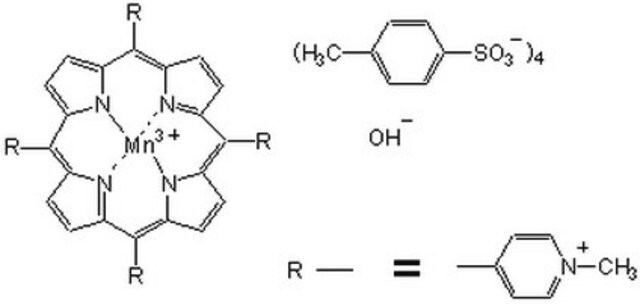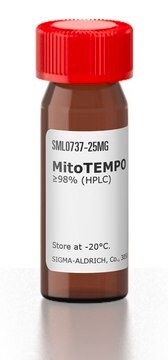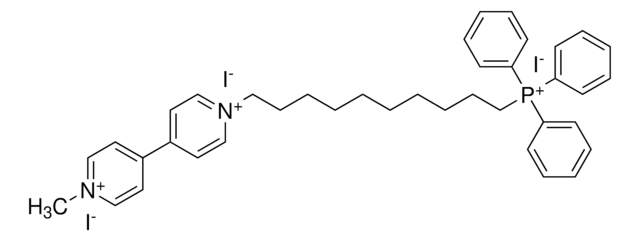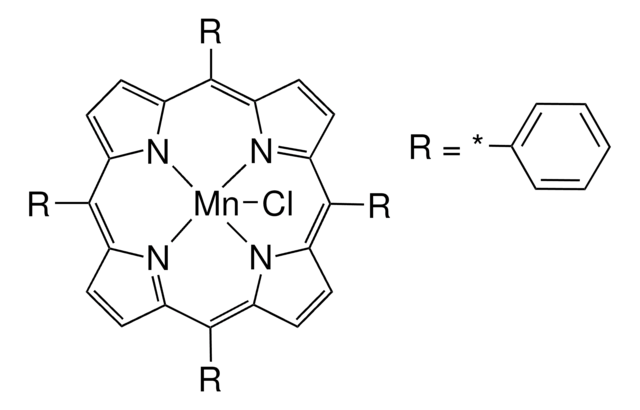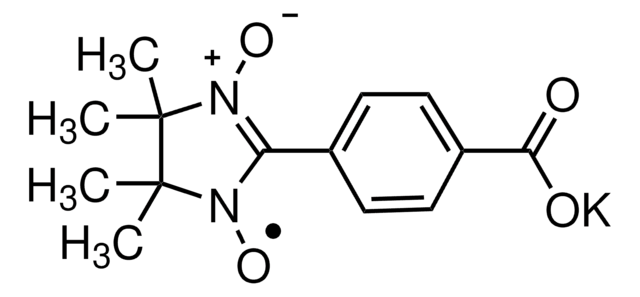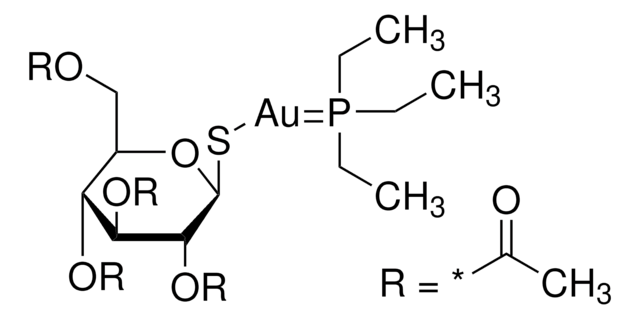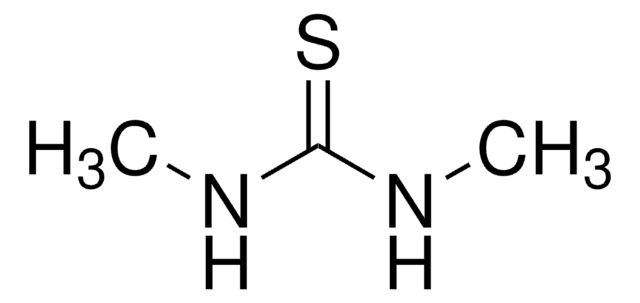475870
MnTBAP
≥95% (TLC), solid, SOD mimetic, Calbiochem®
Synonym(s):
MnTBAP, Mn(III)tetrakis(4-benzoic acid)porphyrin Chloride
About This Item
Recommended Products
Product Name
MnTBAP, Cell-permeable superoxide dismutase (SOD) mimetic and peroxynitrite scavenger.
Quality Level
Assay
≥95% (TLC)
form
solid
manufacturer/tradename
Calbiochem®
storage condition
OK to freeze
desiccated
protect from light
color
brown
solubility
aqueous base: soluble
shipped in
ambient
storage temp.
−20°C
General description
Biochem/physiol Actions
Superoxide dismutase (SOD) mimetic
Warning
Reconstitution
Other Notes
Szabo, C., et al. 1996. FEBS Lett. 381, 82.
Day, B.J., et al. 1995. J. Pharmacol. Exp. Ther. 275, 1227.
Faulkner, K.M., et al. 1994. J. Biol. Chem. 269, 23471.
Legal Information
Storage Class Code
11 - Combustible Solids
WGK
WGK 1
Flash Point(F)
Not applicable
Flash Point(C)
Not applicable
Certificates of Analysis (COA)
Search for Certificates of Analysis (COA) by entering the products Lot/Batch Number. Lot and Batch Numbers can be found on a product’s label following the words ‘Lot’ or ‘Batch’.
Already Own This Product?
Find documentation for the products that you have recently purchased in the Document Library.
Customers Also Viewed
Our team of scientists has experience in all areas of research including Life Science, Material Science, Chemical Synthesis, Chromatography, Analytical and many others.
Contact Technical Service

